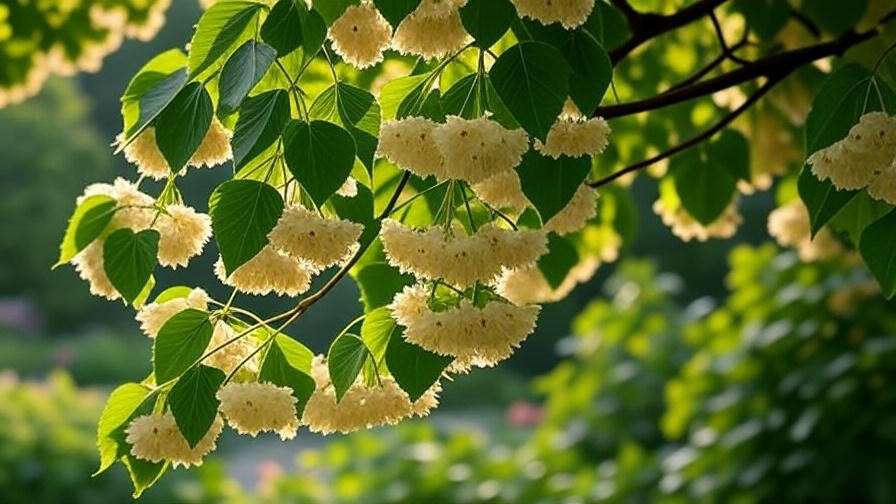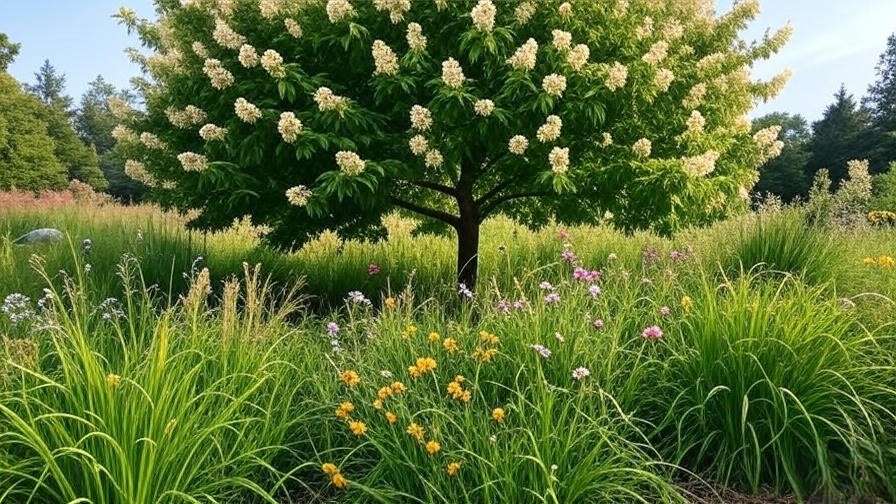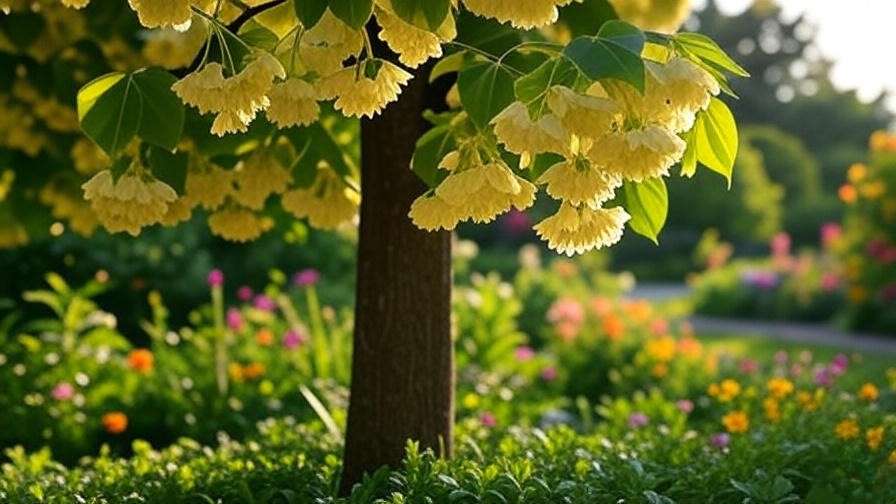Imagine stepping into your garden on a warm summer evening, enveloped by a sweet, honey-like fragrance that feels like a gentle hug from nature. That’s the magic of the linden tree smell, a scent that transforms outdoor spaces into sensory havens. Whether you’re a seasoned gardener or a plant enthusiast dreaming of a fragrant backyard, the linden tree’s captivating aroma is a game-changer. But how do you harness this enchanting scent and make it a centerpiece of your garden? In this comprehensive guide, we’ll uncover the secrets of the linden tree smell, offering expert tips to plant, nurture, and enhance its fragrance. Backed by years of horticultural expertise and botanical research, this article will help you create a garden that not only looks stunning but smells divine. 🌼
What Makes the Linden Tree Smell So Special? 🌿
The Science Behind the Scent 🧬
The linden tree’s fragrance is no accident—it’s a masterpiece of nature’s chemistry. The sweet, floral aroma comes from volatile organic compounds (VOCs) like linalool and farnesol, released primarily during the tree’s blooming season. These compounds create a honey-like scent that’s both calming and invigorating, making linden trees a favorite among gardeners and perfumers alike. According to a 2023 study from the University of California’s Department of Botany, linden flowers produce these VOCs to attract pollinators like bees and butterflies, which explains why your garden might buzz with life when your linden is in bloom. 🐝
This scent isn’t just pleasant—it’s functional. The linden tree smell plays a vital role in supporting local ecosystems by drawing pollinators, which in turn boost biodiversity. Understanding this chemistry empowers gardeners to appreciate the tree’s role beyond aesthetics, making it a must-have for eco-conscious landscapes.

Seasonal and Environmental Influences ☀️🌧️
The intensity of the linden tree smell varies with seasons and environmental factors. The fragrance peaks in late spring to early summer (typically June to July), when linden trees bloom with clusters of creamy-white flowers. Warm, sunny days enhance the scent’s potency, while heavy rain or high humidity can dilute it. Soil quality also matters—nutrient-rich, well-drained soil supports healthier blooms and stronger fragrances.
| Season/Condition | Fragrance Strength | Notes |
|---|---|---|
| Spring (pre-bloom) | Low | Minimal scent; focus on growth. |
| Summer (bloom) | High | Peak fragrance; ideal for enjoyment. |
| Rainy Weather | Moderate | Scent may be subdued but lingers. |
| Poor Soil | Low | Weak blooms reduce fragrance. |
Tip: Test your soil’s pH (ideal range: 6.0–7.5) to ensure optimal conditions for vibrant blooms and a stronger linden tree smell.
Types of Linden Trees and Their Fragrance Profiles 🌲
Popular Linden Varieties for Fragrance 🌼
Not all linden trees smell the same, and choosing the right variety is key to achieving your desired garden aroma. Here are three popular species known for their fragrance:
- Tilia cordata (Littleleaf Linden): This compact tree offers a sweet, floral scent with honeyed undertones. It’s perfect for smaller gardens and urban settings due to its manageable size (30–50 feet tall).
- Tilia americana (American Linden): Known for a slightly citrusy, sweet fragrance, this larger species (60–80 feet) suits spacious yards and provides ample shade.
- Tilia platyphyllos (Bigleaf Linden): Boasting a robust, almost perfume-like aroma, this variety is ideal for gardeners seeking a bold scent but requires more space.
Case Study: Sarah, a suburban gardener in Ohio, planted a Tilia cordata near her patio. She reports that the tree’s fragrance creates a “magical ambiance” during summer evenings, drawing compliments from guests and attracting pollinators to her vegetable garden.
Choosing the Right Linden for Your Garden 🏡
Selecting a linden tree involves balancing fragrance goals with practical considerations like climate, space, and maintenance. For example, Tilia cordata thrives in USDA zones 3–7, making it versatile for cooler climates, while Tilia americana prefers zones 2–8. Consider your garden’s size—smaller spaces benefit from compact varieties, while larger yards can accommodate towering species.
Checklist for Choosing a Linden Tree:
- ☑ Confirm your USDA hardiness zone.
- ☑ Measure available space (height and width).
- ☑ Assess soil drainage and sunlight exposure.
- ☑ Decide on desired fragrance intensity (subtle vs. bold).
How to Enhance the Linden Tree Smell in Your Garden 🌺
Optimal Planting Strategies 🌱
To maximize the linden tree smell, planting location is critical. Choose a spot with full sun to partial shade, as linden trees thrive with at least 6 hours of daily sunlight. Well-drained, loamy soil is ideal, as waterlogged roots can weaken blooms and reduce fragrance. Plant your tree at least 15–20 feet from structures to ensure proper air circulation, which helps disperse the scent throughout your garden.
Expert Insight: Dr. Emily Harper, a horticulturist with 15 years of experience, emphasizes, “Proper spacing and sunlight exposure are non-negotiable for linden trees. A well-placed tree can fill an entire yard with its fragrance.”

Companion Planting for Fragrance Synergy 🌸
Pairing linden trees with complementary plants can elevate your garden’s aroma. Consider planting lavender, jasmine, or roses nearby to create a layered sensory experience. These plants bloom concurrently with lindens, enhancing the overall fragrance without overpowering it. Avoid strong-scented plants like marigolds, which can clash with the linden’s delicate aroma.
Example Garden Layout:
- Center: Tilia cordata for the primary fragrance.
- Surroundings: Lavender bushes for a calming undertone.
- Accents: Climbing jasmine on a trellis for evening scent bursts.
Pruning and Maintenance for Scent Longevity ✂️
Regular pruning encourages healthy blooms, which directly impact the linden tree smell. Prune in late winter or early spring to remove dead branches and shape the canopy, promoting air circulation. Fertilize annually with a balanced, slow-release fertilizer (10-10-10) to support flower production. Water deeply but infrequently, ensuring the soil stays moist but not soggy.
Step-by-Step Pruning Guide:
- Sterilize pruning tools to prevent disease.
- Remove dead or damaged branches first.
- Thin out crowded areas to improve airflow.
- Cut back suckers at the base to focus energy on blooms.
- Step back to ensure a balanced shape.

Common Challenges with Linden Tree Fragrance and Solutions 🛠️
Weak or Fading Scent 😔
A lackluster linden tree smell often stems from poor soil, pests, or improper care. Nutrient-deficient soil can stunt blooms, while pests like aphids may damage flowers. Conduct a soil test to check for deficiencies and apply organic compost or a nitrogen-rich fertilizer as needed. For pests, use neem oil or introduce natural predators like ladybugs.
Expert Insight: Arborist John Carter notes, “Aphids are a common culprit for weak linden blooms. Regular monitoring and organic treatments can restore fragrance within a season.”
Overpowering Fragrance Concerns 🌬️
In small gardens, the linden tree smell can sometimes feel too intense. To balance it, plant the tree at the garden’s edge or near an open area to diffuse the scent. Alternatively, opt for a less fragrant variety like Tilia americana, which offers a subtler aroma.
Tip: Create a “scent buffer” by planting neutral-smelling shrubs like boxwood between the linden and seating areas.
Enjoying the Linden Tree Smell in Your Daily Life 🌞
Creating Fragrant Garden Moments 🧘♀️
The linden tree smell can transform your garden into a sanctuary for relaxation and connection. Imagine sipping morning coffee under its canopy, the sweet fragrance mingling with the breeze, or hosting a summer evening gathering where the scent sets a magical mood. To maximize these moments, place seating areas or hammocks near your linden tree, ideally where the fragrance is strongest—downwind during bloom season. Adding a small water feature nearby can enhance the sensory experience, as the sound of trickling water complements the aroma.
Example: Maria, a gardener from Vermont, shared how she created a meditation nook under her Tilia cordata. “The linden tree smell calms my mind,” she says. “I practice yoga there every morning, and it’s like a natural aromatherapy session.” Her setup includes a wooden bench, soft outdoor cushions, and a lavender border for added fragrance.
Tip: Install solar-powered string lights around your linden tree to create an inviting evening ambiance, letting the scent shine during twilight gatherings.
Harvesting Linden Flowers for Home Use 🌼
Linden flowers aren’t just for the garden—they can bring their delightful scent indoors. Harvesting these blooms for teas, potpourri, or even homemade essential oils is a rewarding way to extend the linden tree smell’s magic. Collect flowers in the morning when their fragrance is strongest, choosing clusters that are fully open but not wilting. Dry them in a well-ventilated area away from direct sunlight to preserve their aroma.
DIY Linden Flower Tea Recipe:
- Ingredients: 1 tbsp dried linden flowers, 1 cup boiling water, honey (optional).
- Steps:
- Place dried flowers in a teapot or cup.
- Pour boiling water over the flowers and steep for 5–7 minutes.
- Strain and add honey for sweetness, if desired.
- Safety Note: Ensure flowers are free from pesticides and consult a doctor if you have allergies or are pregnant.
Tip: Store dried linden flowers in an airtight container to retain their scent for up to a year, perfect for year-round enjoyment.

Supporting Pollinators with Linden Trees 🐝
The linden tree smell isn’t just a treat for humans—it’s a beacon for pollinators like bees and butterflies. During bloom season, linden trees become hubs of activity, supporting local ecosystems and boosting garden biodiversity. A 2024 study from the Royal Horticultural Society found that Tilia species attract up to 50% more pollinators than other common ornamental trees, making them a powerhouse for eco-friendly gardens.
To enhance this benefit, plant pollinator-friendly flowers like coneflowers or bee balm near your linden tree. Avoid chemical pesticides, which can harm bees and dull the tree’s fragrance. By fostering a pollinator-friendly garden, you’ll not only enjoy the linden tree smell but also contribute to a healthier environment.
Expert Insight: Entomologist Dr. Lisa Nguyen explains, “Linden trees are like five-star hotels for pollinators. Their scent draws in bees, which then pollinate nearby plants, creating a thriving garden ecosystem.”
Environmental and Cultural Significance of Linden Trees 🌍
Linden Trees in History and Culture 📜
The linden tree smell has captivated humans for centuries, earning it a revered place in folklore and tradition. In European cultures, linden trees were often planted in village centers as gathering spots, their fragrance symbolizing community and peace. Slavic mythology associates lindens with love and protection, while German poets like Johann Wolfgang von Goethe celebrated their scent in literature. Today, linden trees continue to inspire, with their aroma evoking nostalgia and tranquility.
Historical Anecdote: In medieval Europe, linden trees were planted near monasteries, their fragrance believed to aid monks in prayer and reflection. Gardeners can tap into this legacy by using lindens to create serene, contemplative spaces.
Ecological Benefits Beyond Fragrance 🌳
Beyond their scent, linden trees offer significant environmental benefits. Their broad canopies provide shade, reducing urban heat and lowering energy costs. Their dense foliage improves air quality by trapping dust and pollutants, while their roots stabilize soil, preventing erosion. For eco-conscious gardeners, lindens are a sustainable choice that enhances both aesthetics and environmental health.
List of Eco-Friendly Benefits:
- 🌿 Shade: Reduces cooling costs by up to 20% in summer.
- 🌬️ Air Quality: Filters particulate matter, improving respiratory health.
- 🐦 Wildlife Habitat: Supports birds and small mammals with shelter and food.
- 🌱 Soil Health: Prevents erosion and enriches soil with leaf litter.
Tip: Pair your linden tree with native grasses or wildflowers to create a low-maintenance, eco-friendly garden that maximizes these benefits.

FAQs About the Linden Tree Smell ❓
Why does my linden tree smell stronger some years than others?
The linden tree smell varies due to weather, soil health, and tree age. Warm, dry summers boost fragrance, while excessive rain can weaken it. Nutrient deficiencies or pest damage may also reduce scent. Test your soil annually and apply organic fertilizer to maintain consistent blooms.
Can I grow a linden tree indoors for its fragrance?
Linden trees are not suited for indoor growth due to their size and sunlight needs. Instead, consider dwarf citrus trees or scented herbs like lavender for indoor fragrance. For outdoor containers, a dwarf linden variety like Tilia cordata ‘Greenspire’ may work in large pots with proper care.
Are linden trees safe for allergy sufferers?
While linden pollen is generally low-allergenic, sensitive individuals may experience mild reactions. Tilia cordata produces less pollen than other varieties, making it a safer choice. Consult an allergist and monitor symptoms during bloom season.
How long does the linden tree smell last each year?
The fragrance peaks for 2–4 weeks during the blooming period (June–July), depending on the variety and climate. To extend the scent, maintain tree health with proper watering and pruning, and consider companion plants to prolong the garden’s fragrance.
Can I propagate linden trees to share their scent?
Yes, linden trees can be propagated via cuttings or seeds, though cuttings are more reliable for beginners. Take 6-inch softwood cuttings in early summer, dip in rooting hormone, and plant in a moist, well-draining mix. Expect roots in 4–6 weeks with consistent care.
Conclusion 🌟
The linden tree smell is more than a delightful fragrance—it’s an invitation to create a sensory-rich, eco-friendly garden that inspires joy and connection. By choosing the right linden variety, planting strategically, and maintaining your tree with expert care, you can transform your outdoor space into a fragrant haven. Whether you’re sipping linden flower tea, hosting friends under its canopy, or supporting pollinators, this tree offers endless rewards. Start your journey today by planting a linden tree and sharing your experiences in the comments below. Let’s make every garden a masterpiece of scent and sustainability! 🌳✨
Call to Action: Explore more plant care tips on our website, and try these strategies to bring the linden tree smell to life in your garden. Share your favorite fragrant plants with us—what’s blooming in your yard? 🌼













